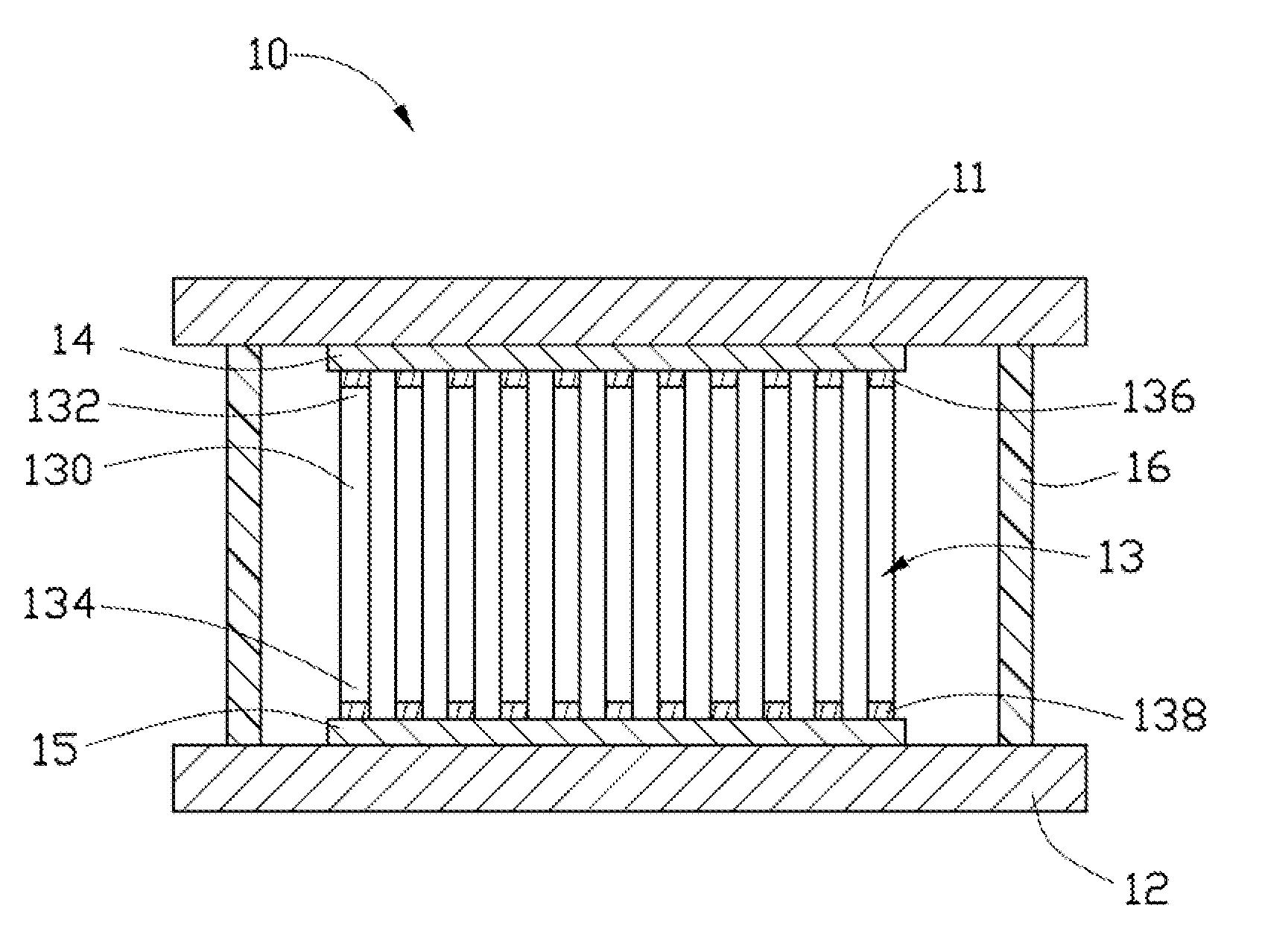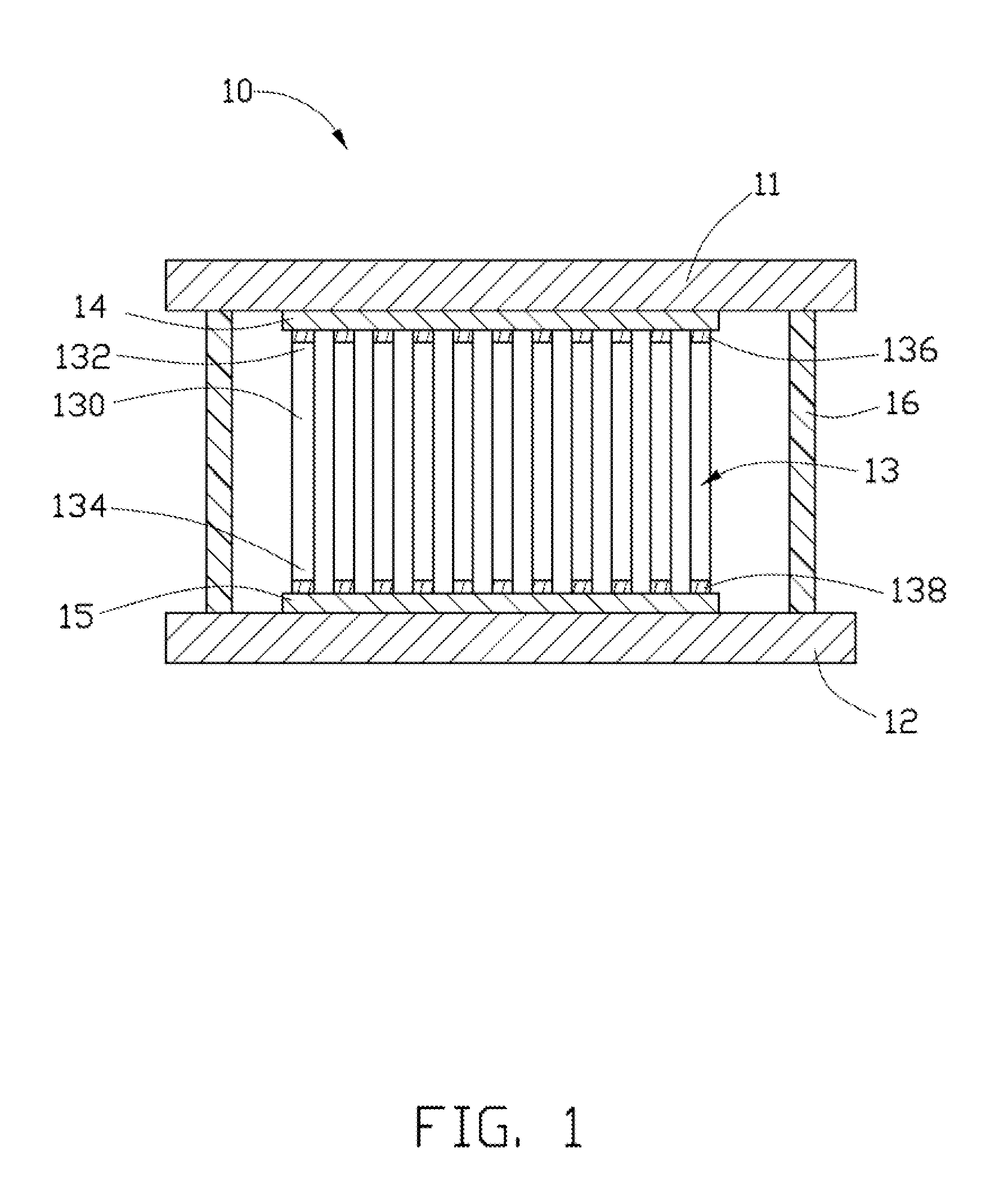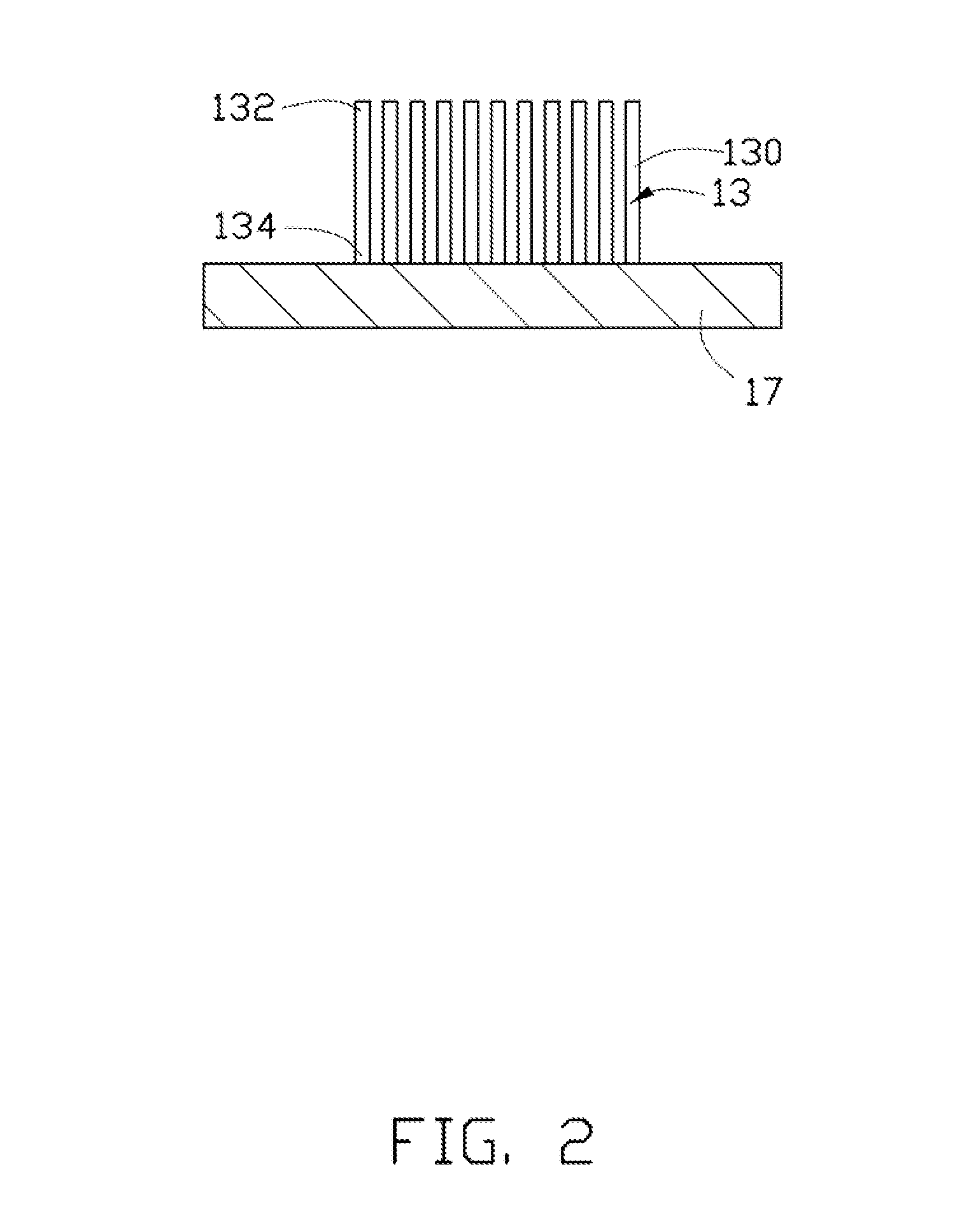Carbon nanotube array sensor
a carbon nanotube array and sensor technology, applied in the field of sensors, can solve the problems of decreasing the sensitivity and precision of the carbon nanotube array sensor
- Summary
- Abstract
- Description
- Claims
- Application Information
AI Technical Summary
Benefits of technology
Problems solved by technology
Method used
Image
Examples
Embodiment Construction
[0014]The disclosure is illustrated by way of example and not by way of limitation in the figures of the accompanying drawings in which like references indicate similar elements. It should be noted that references to “an” or “one” embodiment in this disclosure are not necessarily to the same embodiment, and such references mean at least one.
[0015]Referring to the embodiment shown FIG. 1, a carbon nanotube array sensor 10 includes a first electrode 11, a second electrode 12, a carbon nanotube array 13, a first conductive metal layer 14, and a second conductive metal layer 15. The carbon nanotube array 13 is located between the first and second electrodes 11, 12. The first conductive metal layer 14 is disposed between the first electrode 11 and the carbon nanotube array 13. The second conductive layer 15 is interposed between the second electrode 12 and the carbon nanotube array 13.
[0016]The first and second electrodes 11, 12 are spaced apart from each other and are made of conductive...
PUM
| Property | Measurement | Unit |
|---|---|---|
| thicknesses | aaaaa | aaaaa |
| thicknesses | aaaaa | aaaaa |
| thicknesses | aaaaa | aaaaa |
Abstract
Description
Claims
Application Information
 Login to View More
Login to View More - R&D
- Intellectual Property
- Life Sciences
- Materials
- Tech Scout
- Unparalleled Data Quality
- Higher Quality Content
- 60% Fewer Hallucinations
Browse by: Latest US Patents, China's latest patents, Technical Efficacy Thesaurus, Application Domain, Technology Topic, Popular Technical Reports.
© 2025 PatSnap. All rights reserved.Legal|Privacy policy|Modern Slavery Act Transparency Statement|Sitemap|About US| Contact US: help@patsnap.com



